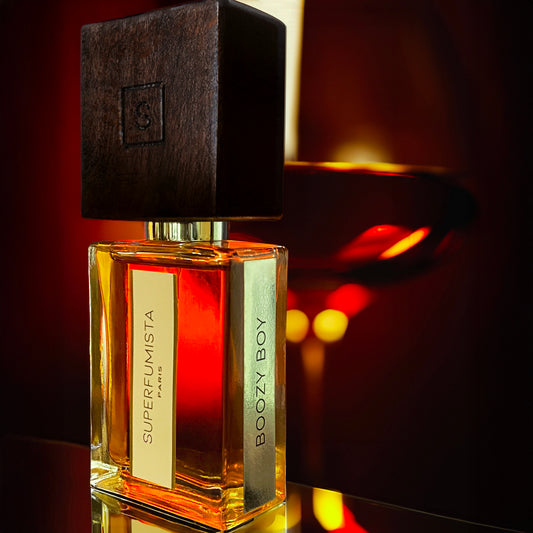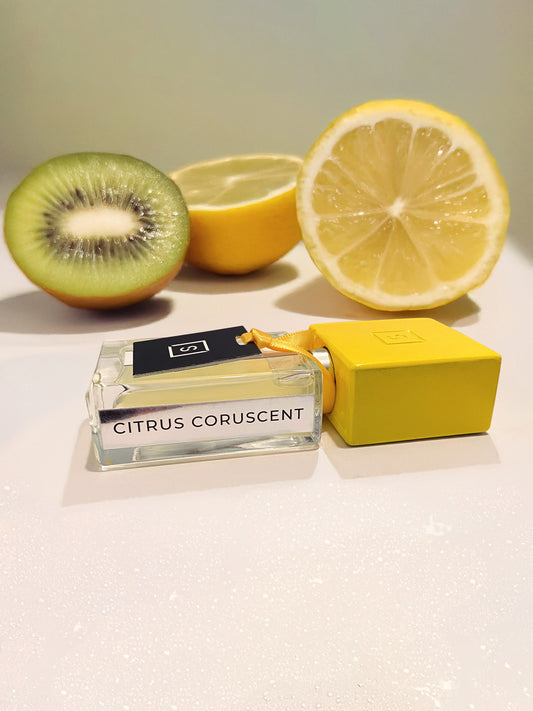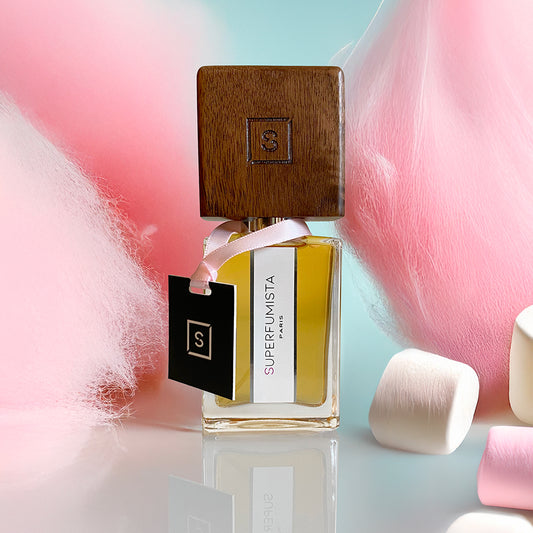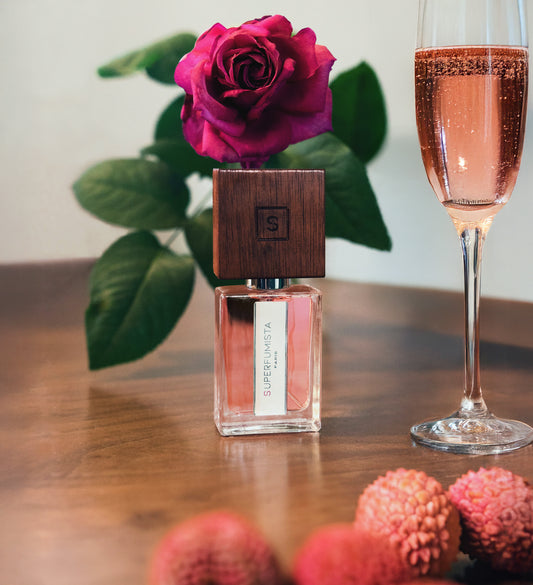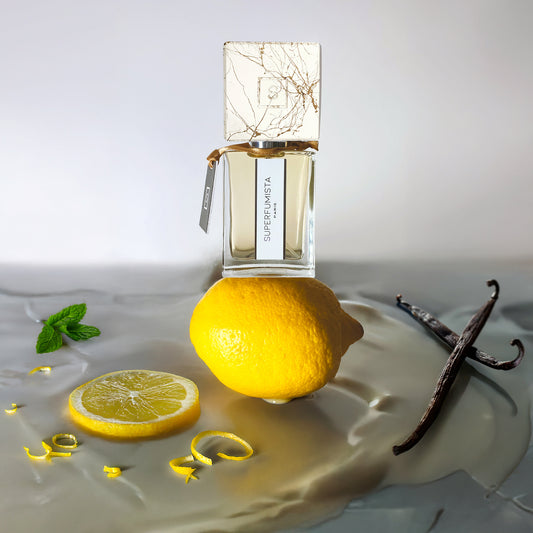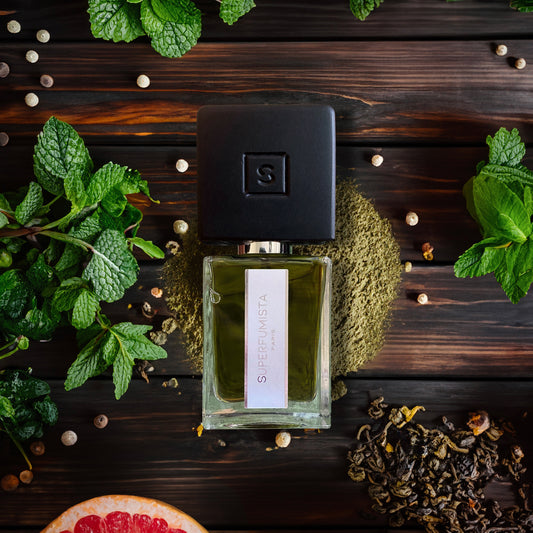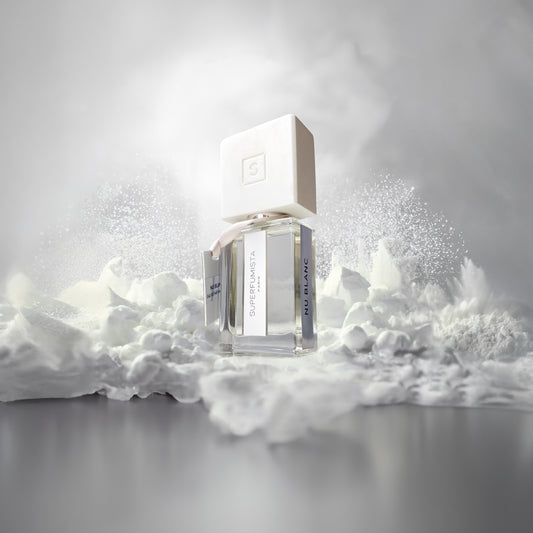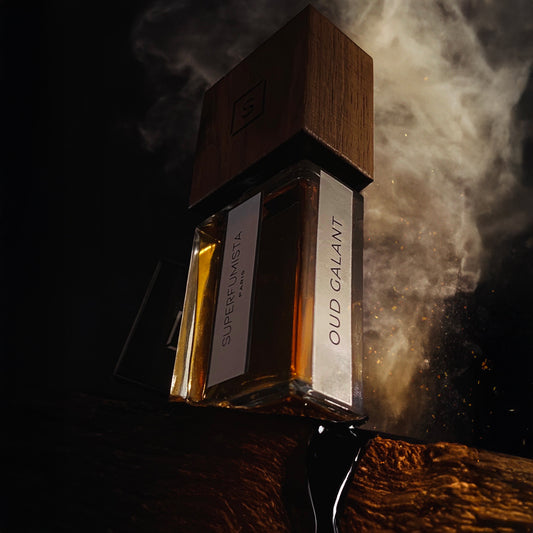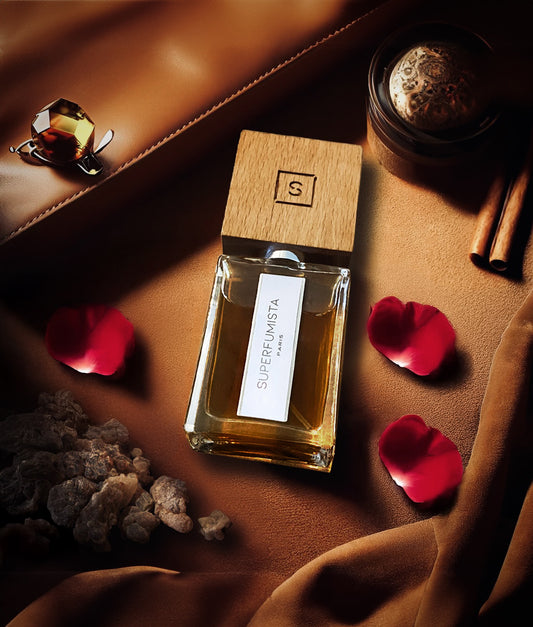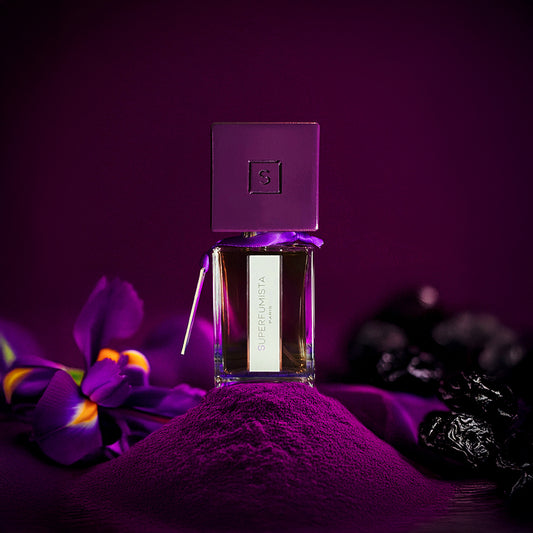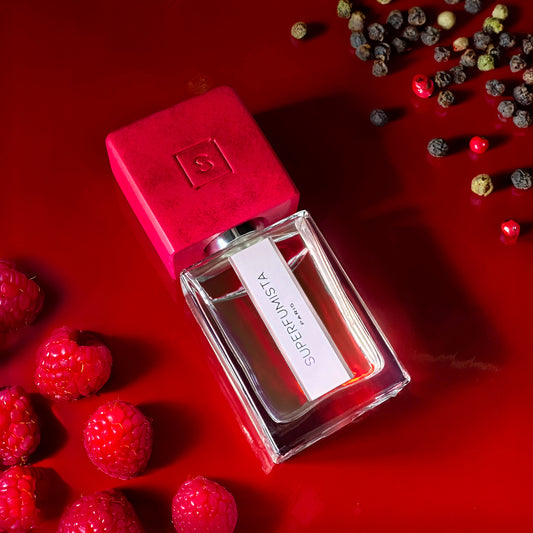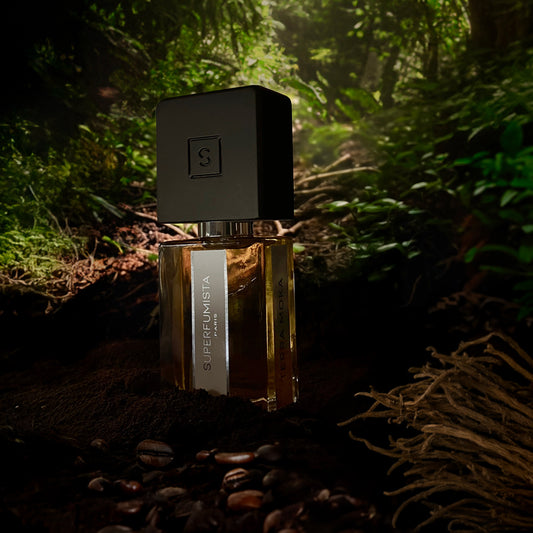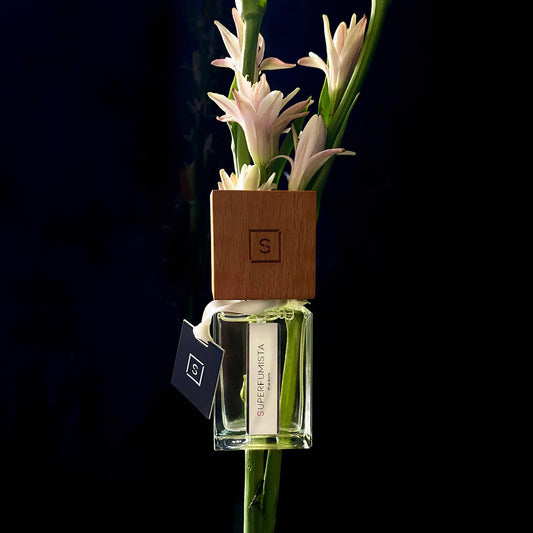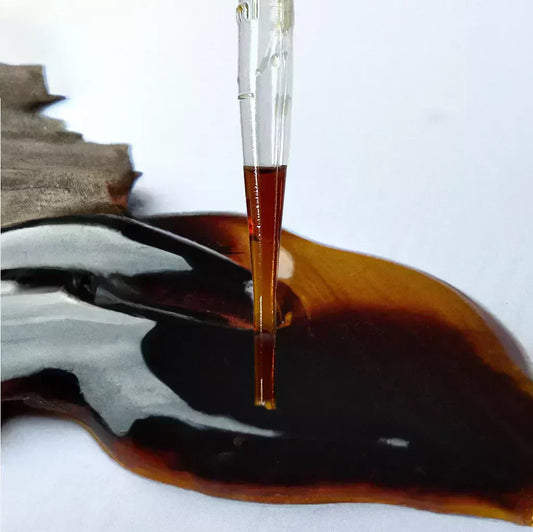
Orris
Share
Iris in perfumery.
Working with iris in a perfume is to explore a rare and captivating material, where each note reveals a discreet luxury. Including it in a composition, whether as the absolute star or in the background, supporting other materials, is a perfumer's privilege.
The iris, often called "blue gold," has fascinated people for centuries. Its petals inspired artists like Van Gogh, while its rhizome was prized at the court of Catherine de Medici, dried and powdered for its unique fragrance. This root, a symbol of refinement, offers a complex palette of nuances ranging from powdery softness to earthy depth.
Iris and its powdery notes evoke the refinement of royal courts and the "old-fashioned" elegance of rice powders, once composed of rice starch to give the complexion a matte and delicately scented finish.
This representation, somewhat frozen in a certain classicism, can nevertheless be revisited to free itself from the world of makeup and a certain vision of femininity of yesteryear. Its floral, woody, earthy, and even vegetal facets inspire perfumers towards versatile lands, both modern and chic.
Iris varieties in perfumery.
The scent of iris flowers is generally sweet and of low intensity, with floral, powdery notes, and even a slight hint of violet. But in perfumery, it is not the flower that is used: it is the rhizomes (thickened roots), which after several years of drying, deliver precious extracts such as butter , concrete or iris absolute .
-
Iris pallida : Also known as Florentine iris, this is the most prized variety for its delicate fragrance and powdery, soft, and slightly sweet notes. Grown primarily in Italy, this iris is renowned for producing high-quality iris butter.
-
Iris germanica : more common and robust, it is also used for its root, although it is less fragrant than Iris pallida. However, it offers earthy and woody facets, which enrich compositions.
-
Florentine Iris : once more widespread, this iris is now less cultivated, but remains appreciated for its fine aromas and its floral and powdery notes.

Iris pallida

Iris germanica

Florentine Iris
In perfumery, pale-flowered varieties such as iris pallida or florentina are favored, not for the scent of their flowers, but for the superior olfactory quality of their rhizomes, namely their iron concentration. Varieties with more intense or deep colors, on the other hand, are mainly grown for ornamental purposes.
Iris butter
The precious essential oil of iris, often called "butter," is obtained by steam distillation of the dried rhizomes of iris pallida. This slow and expensive process releases irones, the odorous molecules responsible for the powdery, woody signature of iris. Depending on the variety cultivated and the drying time—sometimes up to three years—variable levels of alpha irone (with floral, sweet notes reminiscent of violets) and beta irone (more earthy, woody, almost leathery) are observed. Some butters also reveal vegetal or metallic facets, close to the scent of fresh root or carrot, to the point that perfumers sometimes use carrot seed essential oil to emphasize its dimension.
Iris concrete
Another noble extract of the rhizome, iris concrete is obtained by extraction with volatile solvents. Its waxy and dense appearance retains a great olfactory richness, although more raw than butter. It reveals a darker, deeper iris, with earthy, slightly leathery accents. While it is sometimes used as such in perfumery, concrete is mainly used as a raw material for the production of absolute. Less concentrated in irones than butter, it nevertheless provides a texture and persistence that are highly appreciated in woody, oriental, or fruity accords.
Iris absolute
Iris absolute is the result of washing the concrete with alcohol, followed by slow evaporation of the alcohol. This process isolates the finest, most floral part of the iris. More supple and easier to integrate into a composition, the absolute reveals a powdery, cosmetic facet, while retaining a beautiful woody depth. Its iron content can reach 15 to 20% depending on the quality, making it a prized material in fine perfumery for its luminous elegance and its ability to structure a trail with grace and subtlety.



The iris in synthesis
Its high cost and rarity lead perfumers to resort to synthetic alternatives to reproduce the multiple olfactory faces of iris.
Among them, ionones — alpha, beta, methyl, gamma or dihydro-beta — play an essential role in the construction of so-called “iridescent” accords. These molecules reflect the elegant powder snow and the woody sweetness of iris, while subtly evoking the scent of violet , to which they are chemically related. Some ionones display facets fruity, green or musky , bringing depth and modernity to the accord:
‣ alpha ionone brings a woody floral elegance,
‣ beta ionone , softer, adds a fruity-purple and velvety effect,
‣ dihydro-beta ionone develops floral notes that are also woody, earthy, amber and fruity
‣ methyl ionone , the pillar of iris/violet accords, ensures a beautiful powdery, floral and woody hold.
In parallel, The irones , naturally present in iris butter or absolute, embody the quintessence of natural iris, with their accents powdery, floral and earthy , extended by a veil that is sometimes almost metallic. Together, ionones and irones allow the iris to vibrate between classicism and contemporary reinvention.
Materials such as Orris hexanone, Orris Givco®, Vertenex®, Vertofix® or Boisiris® are alternatives that also provide additional nuances, allowing you to invoke the subtle complexity of natural iris through touches.
Orris Hexanone : also known as Orivone®, this synthetic molecule reproduces the iridescent and powdery notes of iris with fresh, green nuances reminiscent of rhizomes.
Orris Givco® : developed by Givaudan, this material is designed to imitate iris absolute and iris butter with woody, earthy and powdery notes with a vintage touch.
Vertenex® : this molecule developed by IFF provides woody and amber notes, often used to strengthen the structure of perfumes and prolong their longevity.
Vertofix® : also developed by IFF and known as Methyl Cedryl Ketone, it is used for its woody and amber notes with nuances of violet, even slightly leathery.
Boisiris® : This synthetic molecule from Givaudan reproduces woody notes with a distinctive touch of violet and iris. The elegance and depth of the woody and earthy facets balance the floral sweetness.
Iris in Superfumista perfumes
In our collection, iris concrete is used in the formulation of three of our creations.
Velvet Plum features a concrete of iris enhanced by a range of ionones, languidly infusing in a velvety, rich and delicious accord of candied plums.
In Nu Blanc , the iris is enhanced by other ingredients with powdery facets such as alpha isomethyl ionone or heliotropin.
The materials that accompany the iris butter in Oud Galant have woody and powdery facets including alpha ionone, beta ionone and the material called Boisiris®.
The materials that accompany the iris butter in Oud Galant have woody and powdery facets including alpha ionone, beta ionone and the material called Boisiris®.





